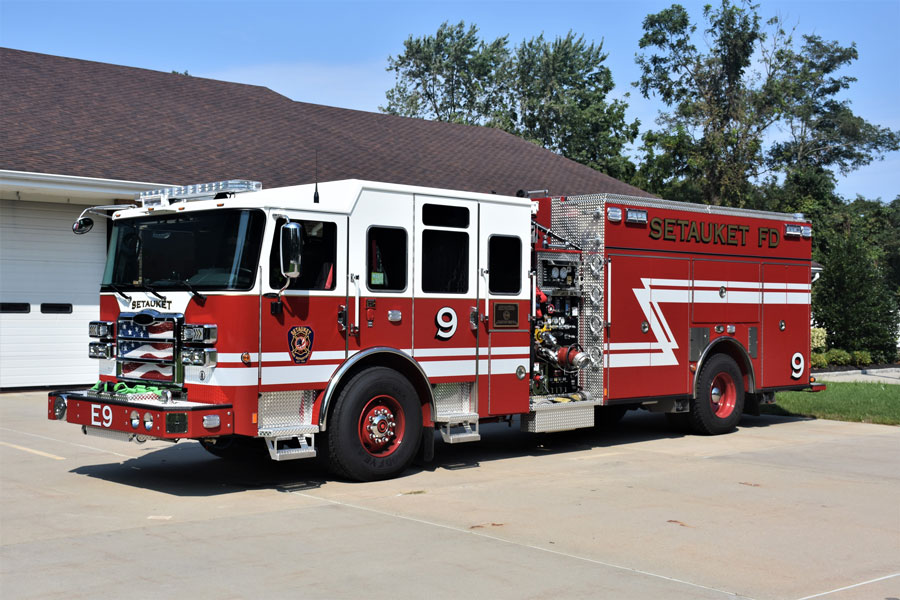
By Bob Vaccaro
A century ago, in the village of East Setauket, New York, a meeting was called for the purpose of organizing a volunteer fire company. In August 1909, the fire department was officially organized.
In 1911, the fire company purchased its first main piece of fire apparatus for $725. It was a combination hook and ladder, which could be pulled by manpower or by horse.
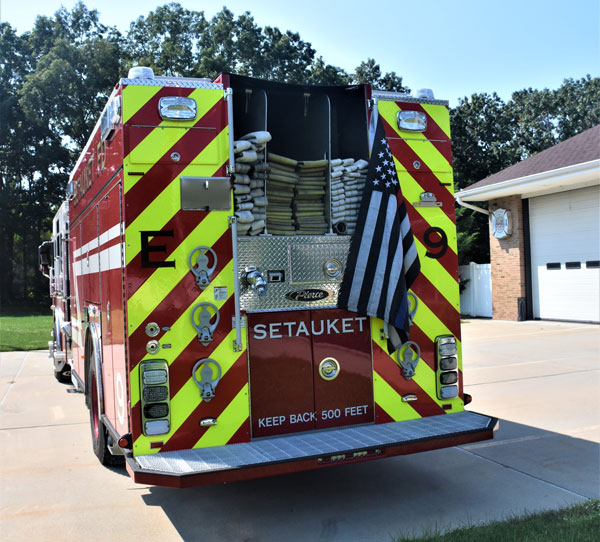
They say history sometimes repeats itself. In September 1938, a bond issue was authorized by the district for new trucks and to build an addition onto the firehouse. The bond was approved and the district purchased a booster truck, a pumper, and a hook and ladder truck from Ward LaFrance Company in Elmira, New York. After some careful figuring and refiguring of the budget, enough money was left over to purchase a fourth vehicle, a rescue truck fitted with special equipment.
According to Fire District Manager Dave Sterne, “we try to replace our front-line fire apparatus on a 20-25-year plan, but due to budget restrictions sometimes we go over that limit. Since we had several pumpers over that limit and some right at the limit, we decided to go with a large order of four pumpers at once. In the long run we would be saving some cost.”
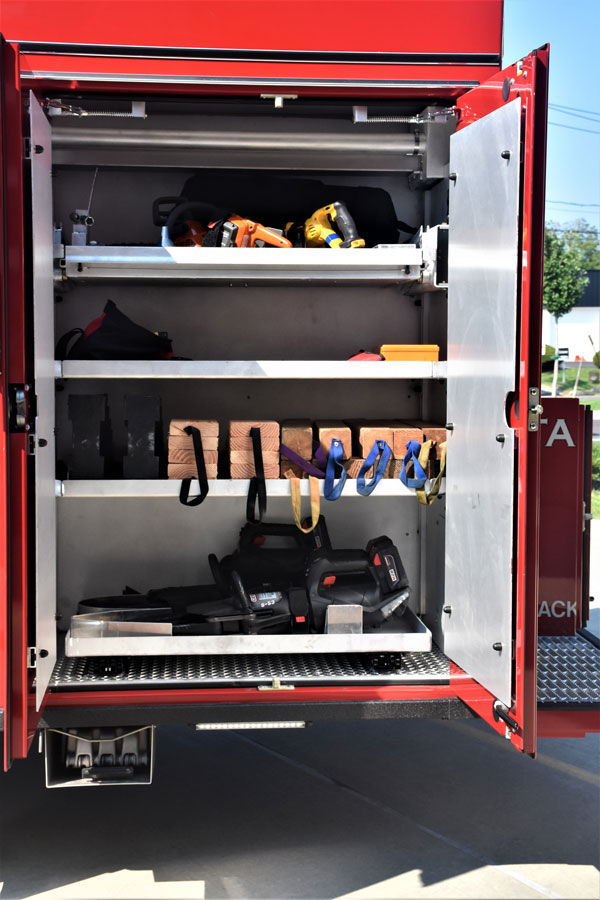
When the process first started about three years ago, the committee met with many different manufacturers. The members especially liked the design of Kentland, Maryland, and more closely, Dix Hills’ rescue style pumpers.
The department decided to go with Pierce and Firematic.
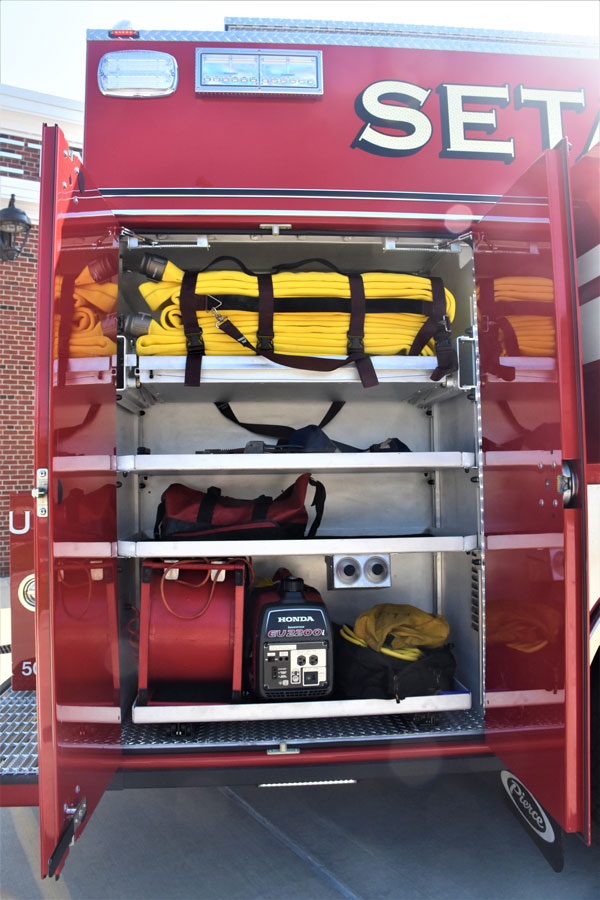
“We liked Pierce because of their computerized spec systems, options and drawings, and weekly build photos, as well as the closeness of their service facility to our fire district,” Sterne said. “Our sales person Ray Muller was especially helpful during the entire process. “Ray really knows his stuff. He was extremely knowledgeable and top notch during the entire build.
Cost wise, the department went with the HGAC purchase lease program. The fire district will make three annual payments and pay off the purchase in three years.
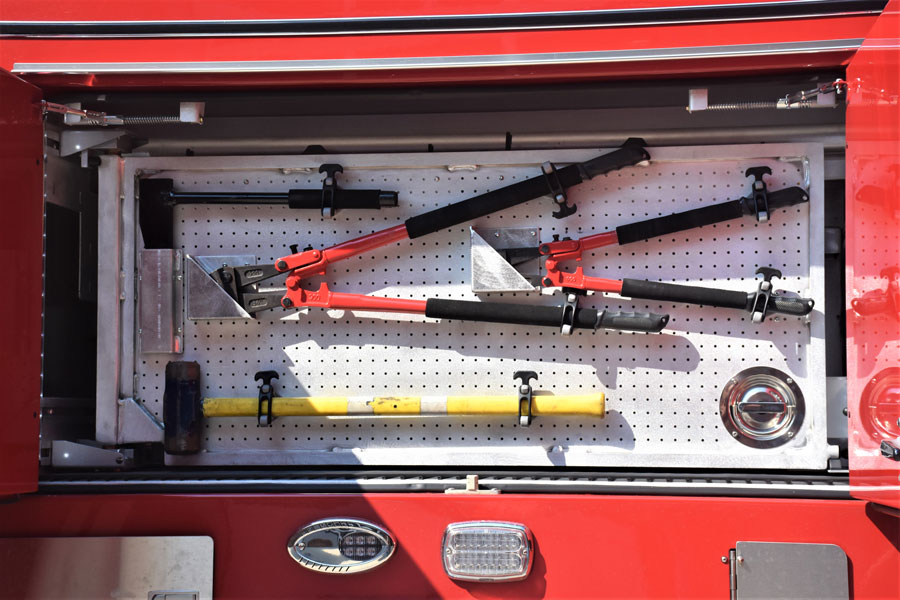
When the committee looked at specs and design, it wanted to have four identical, multi-use rescue pumpers. They would match response protocols: a rescue pumper at each of the three stations and one station having two.
“These pumpers have ergonomically lower hosebeds, so our firefighters don’t have to climb to stretch attack lines; a bigger back step; extended front bumpers, which we didn’t have before on our older pumpers; bigger compartment space to carry additional equipment; and added a trash line at the front bumper. Also, spec-ed out was a slightly larger cab, TAK-4 suspension system and air bags in the cab.”
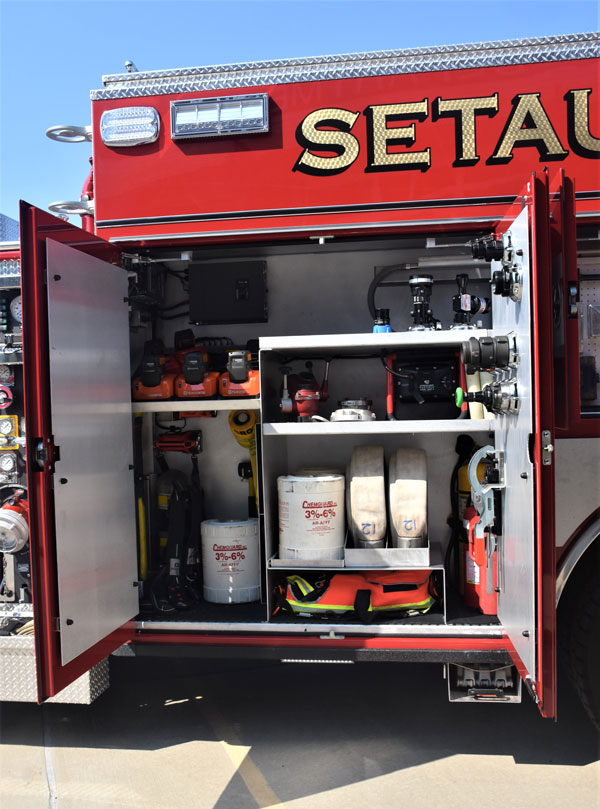
The pump and tank size were comparable to the department’s older units. As far as equipment carried, the pumpers have the normal complement of engine company tools and fittings as well as forcible entry tools, saws, ropes, Para Teck struts, air bags and Genesis Cutters, rams and spreaders.
“Since the department responds on a great deal of technical rescue calls, we carry tools related to that, as well as ice rescue tools and suits,” Sterne said.
Hose complement is as follows: two 200-feet 1¾-inch hose in the crosslays, 1,000-feet of 5-inch large diameter hose (LDH) for supply line, 600-feet of 2¼-inch in the rear hosebed, 300-feet of 1¾-inch, and more than 400-feet of 2¼-inch hose.
“We decided not to go with a foam system or generator to keep the cost down somewhat,” he said. “Foam is supplied with an exterior eductor through the side-pump panel if we need to flow foam.”
The Setauket Fire District planned well ahead of time for its large order of four pumpers. It looked at other manufacturers and other vehicle designs before deciding on Pierce. The committee worked with its sales person and Pierce’s engineers to get what it really wanted. The design it chose also would make it safer for firefighters to operate on the fireground as well as carry the tools needed to do the job at hand.
In addition, the fire district currently has a Pierce Ascendant quint platform on order.
- Pierce Enforcer chassis, all aluminum cab and body, six-man cab
- Wheelbase: 230.5-inches, 49,800-pounds gross vehicle weight
- Front axle TAK-4 22,800-pounds, Dana 27,000-pounds rear axle
- Cummins L9 450-hp, Allison EVS 3000 transmission, Jacobs engine brake
- Waterous 1,750-gpm single-stage pump, 750-gallon Polytough water tank.
- Pierce Command Zone Electronics and Control System
- Whelen LED light system
Today the Setauket Fire Department operates with three companies: Engine Company 1 based out of the Main Street firehouse; Engine Company 9 based out of the Arrowhead Lane firehouse; and Hook & Ladder Company 1 based out of the Nicholls Road firehouse.
There are 115 volunteers, four paid firefighters that operate 5 a.m.-5 p.m. Monday-Friday.
The fire district operates four ambulances, three brush trucks, two rescue boats, five attack pumpers, two rescue trucks, and two ladder trucks.
- 28-square-miles
- 30 miles of beach front
- Over 10,000 private residences
- Four adult assisted living and nursing homes
- Over 700 commercial businesses
- Seven schools
- Stony Brook University and University Hospital (45,000-person daytime population)
- Daytime population exceeds 90,000 people
- Nichols Road traffic exceeds 35,000 vehicles every 24 hours

